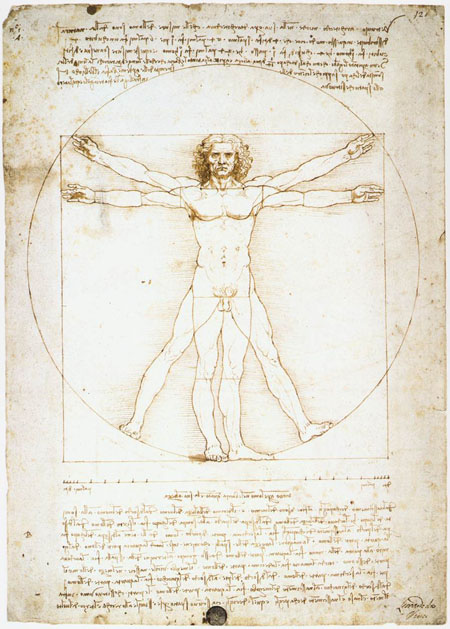
Leonardo da Vinci, "Vitruvian Man" 1492
Pen, ink, watercolour and metalpoint on paper, 343 x 245 mm
(Gallerie dell'Accademia, Venice)
According to the Roman architect and engineer Vitruvius (1st century CE) in his treatise De Architectura , Book, 3, Chapter 1 ["The Planning of Temples"]
3. "In like fashion the members of temples ought to have dimensions of their several parts answering suitably to the general sum of their whole magnitude. Now the navel is naturally the exact centre of the body. For if a man lies on his back with hands and feet outspread, and the centre of a circle is placed on his navel, his figure and toes will be touched by the circumference. Also a square will be found described within the figure, in the same way as a round figure is produced. For if we measure from the sole of the foot to the top of the head, and apply the measure to the outstretched hands, the breadth will be found equal to the height, just like sites which are squared by rule.
4. Therefore if Nature has planned the human body so that the members correspond in their proportions to its complete configuration, the ancients seem to have had reason in determining that in the execution of their works they should observe an exact adjustment of the several members to the general pattern of the plan." (Loeb translation, 1931, I, 161)
|

